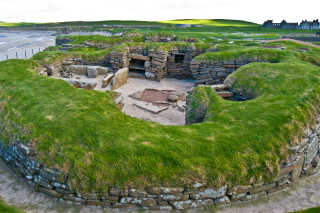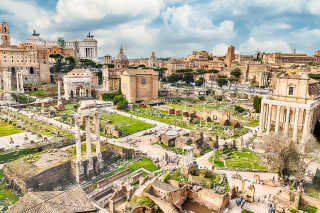The fascinating history of the human journey can be traced through the dwellings and monuments left behind. Venturing to all corners of the globe, we have compiled a list of 15 archaeological sites to visit in the world. Some of them can be recognized just by looking at the photos, while others are less famous, but nevertheless, each site has its own story.

Mesa Verde National Park, USA
A series of 800-year-old Ancestral Pueblo cave dwellings in Mesa Verde, Colorado, Mesa Verde National Park serves as a reminder that people flourished in North America long before Europeans arrived. The fascinating rock structures range from individual, self-contained rooms to villages of up to 150 interconnected spaces.
2. Angkor Wat, Cambodia
Angkor Wat is a vast and sprawling network of 12th century temples, which had long been hidden in the Cambodian forest. Built as a shrine to Vishnu and later converted into a Buddhist temple, it is the largest religious structure in the world.
3. Skara Brae, Scotland
The most complete and best preserved Neolithic site in Europe, the stone houses of Skara Brae were built approximately 5,000 years ago. Located on the Scottish islands of Orkney, the site offers exceptional insight into the daily lives of prehistoric farmers.
4. Gobekli Tepe, Turkey
Another important Neolithic site, Göbekli Tepe, is much older than Skara Brae. The ruins of engraved megalithic pillars are believed to have been a site of ritual or social use. It was built approximately 12,000 years ago, making it the oldest man-made religious structure on Earth.
5. Terracotta Army, China
The Terracotta Army and the necropolis in which they were found together form one of the most intriguing archaeological sites on Earth. Today we can visit the excavation site and see the thousands of life-size terracotta soldiers that were buried in the tomb of Emperor Qin some 2,300 years ago. Located near Xi’an, China, the site was only discovered in the 1970s.
6. Pompeii, Italy
When Mount Vesuvius erupted in AD 79. C., caused devastation and human tragedy on an unimaginable scale. Despite that, Pompeii offers visitors an amazing glimpse into everyday Roman life, as the volcanic ash has helped to perfectly preserve the moment in time. The city was buried and hidden for over 1,500 years before being discovered in 1748.
7. Abu Simbel, Egypt
The rock-cut temples at Abu Simbel are part of the Nubian Monuments UNESCO site. The twin temples were built around 3,300 years ago during the reign of Ramses II to honor him and his wife Nefetari. Beautifully intricate and staggeringly imposing, the vast figures in the main temple stand 21 meters tall.
8. Ellora Caves, India
The fascinating network of Ellora caves in western India is one of the largest of its kind. Rock-cut temples of Buddhist, Hindu and Jain origin were built in 100 caves between the 7th and 11th centuries.
9. Ggantija Temple, Malta
There are three Neolithic temples in Malta and Gozo, the most important of which, the Ggantija Temple on the island of Gozo, is considered the oldest free-standing structure on Earth. The Ggantija is believed to have been used in prehistoric fertility rites.
10. Palace of Knossos, Greece
Before the Athenians came the Minoans, a Bronze Age civilization that thrived on Crete over 4,000 years ago. The Palace of Knossos, believed to have been the setting for the myth of the Minotaur, was controversially restored in the early 20th century, adding to its fascinating history.
11. Roman Forum, Italy
The Roman Forum housed the important government buildings from where the emperors ruled their successful empire. Today, visitors can walk the streets and paths while looking at the ruins of these buildings. The famous Colosseum, to the east of the Forum, has fared better and is the largest standing amphitheater in the world.
12. Avebury Circles, England
The Avebury Circles are Neolithic stone circles that have mystified onlookers for thousands of years. Built approximately 4,000 years ago, they are generally believed to have ritual or social significance and are considered a sacred destination. The world famous Stonehenge is also located 20 miles to the south and is considered the most sophisticated stone circle in the world, near Avebury it is the largest, with a circumference of 1300 metres.
13. Tikal, Guatemala
Once one of the largest Mayan cities in the Americas, the Tikal site in Guatemala was populated from the 4th century BCE. C. until the Classic Mayan decline in the 9th century AD. Comprised of grand plazas, intricate pyramid temples, and palace complexes, the entire site remained intact and mostly unknown for nearly 1,000 years.
14. Valley of the Temples, Sicily, Italy
Sicily’s famous Valley of the Temples boasts no less than six temples, built to honor popular Greek gods during the 5th and 4th centuries BC. The iconic Temple of Concord is one of the best preserved Greek temples in the world.
15. Skellig Michael, Ireland
The twin-peaked island of Skellig Michael is home to a 6th-century Gaelic-Christian monastery. This unique site is made up of beehive-like structures that can only be accessed via a narrow and steep flight of steps.
















